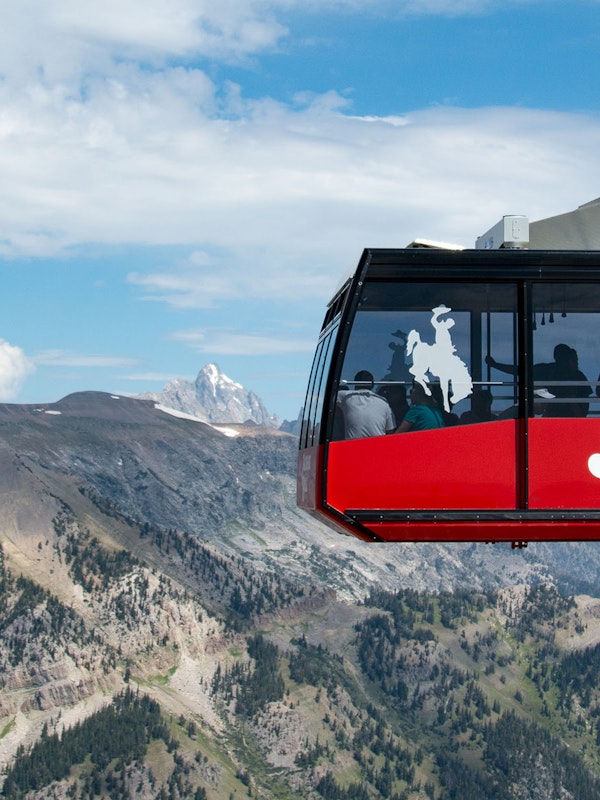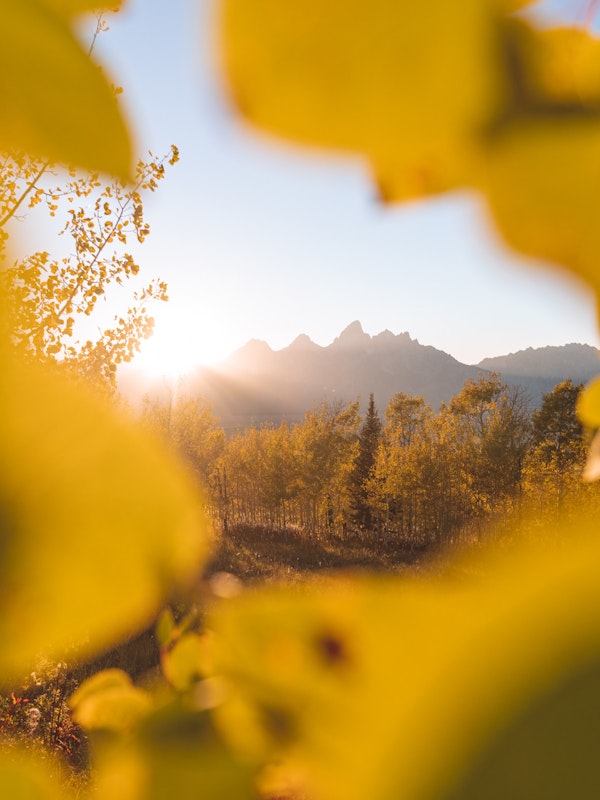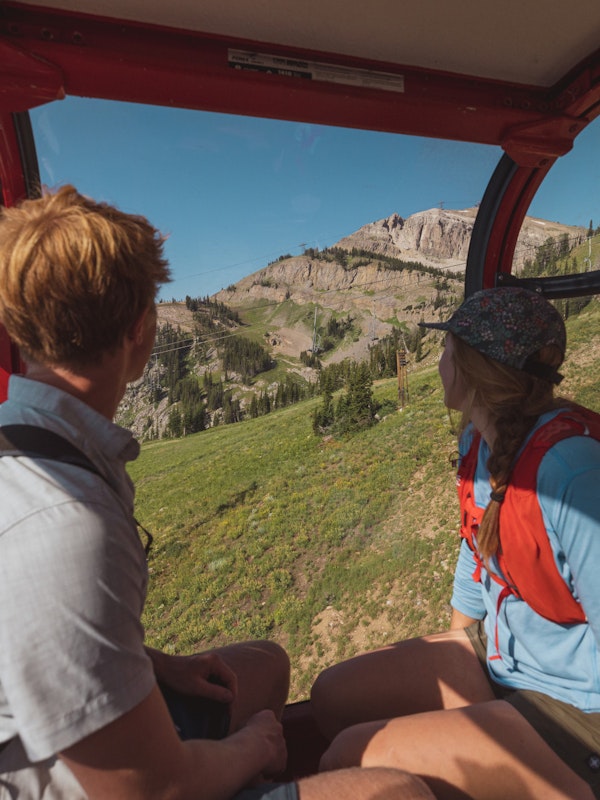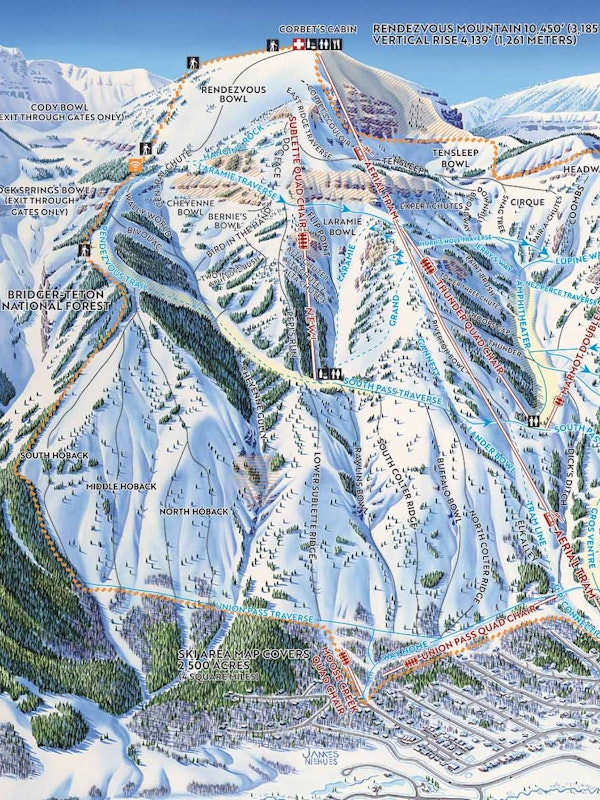Jackson Hole, Grand Teton National Park, and the Greater Yellowstone Ecosystem are among the most biodiverse regions in North America, offering a chance to witness wildlife in its most natural and awe-inspiring form. From the moose grazing along riparian habitats to the elusive wolves roaming the wilderness, this area is a haven for nature enthusiasts and photographers alike. Let’s explore the iconic species that call this region home, along with tips for safe and ethical wildlife viewing.
Bison: The Mighty Icons of the American West
No animal embodies the spirit of the American West quite like the bison, and the Jackson Hole area offers plenty of opportunities to see these magnificent creatures. Once nearly driven to extinction, bison have made an extraordinary recovery and are now thriving in the Greater Yellowstone Ecosystem.
- Where to Spot Them: Bison herds are commonly seen in Antelope Flats near Mormon Row and in the southern areas of Grand Teton National Park. For larger herds, head north to Yellowstone’s Hayden Valley.
- Best Time to Visit: Summer (June-August) for grazing herds or late spring (May) to see newborn calves, often referred to as “red dogs” for their reddish coats.
- Fun Fact: Bison are the largest land mammals in North America, with males (bulls) weighing up to 2,000 pounds.
- Safety Tip: Always stay at least 25 yards away from bison, as they can run up to 35 miles per hour and are highly unpredictable when approached.
The sight of a herd of bison moving across the open plains, framed by the towering Tetons, is one of the most iconic images of Wyoming and a highlight for any wildlife enthusiast. Their presence serves as a living reminder of the resilience and majesty of the natural world.
Moose: The Majestic Giants of the Riparian Zones
Moose are one of the most iconic species in the Jackson Hole area, thriving in the lush riparian habitats near rivers, streams, and wetlands. These towering herbivores are often spotted along the Snake River or in the willow flats near Moose-Wilson Road.
- Where to Spot Them: Look for moose in early morning or late evening near Schwabacher Landing or Oxbow Bend.
- Best Time to Visit: Fall (September-October) during the rutting season, when bulls can be seen sparring, or spring, when cow moose and their calves are active.
- Fun Fact: Moose are excellent swimmers and can dive up to 20 feet to feed on aquatic plants.
Elk: The Icons of the National Elk Refuge
Each winter, thousands of elk migrate to the National Elk Refuge in Jackson Hole, creating one of the most impressive wildlife spectacles in the region. This migration is essential for their survival during the harsh winter months.
- Where to Spot Them: During winter, take a sleigh ride through the National Elk Refuge to get an up-close view of large herds.
- Best Time to Visit: Winter (December-March) for the migration or early fall (September) to witness the dramatic elk bugling during the rut.
- Fun Fact: Elk antlers can grow up to an inch per day, making them one of the fastest-growing tissues in the animal kingdom.
Bears: Grizzlies and Black Bears in Their Natural Habitat
Both grizzly bears and black bears inhabit Grand Teton National Park, captivating visitors with their powerful presence. Grizzlies are often seen foraging in open meadows, while black bears prefer forested areas.
- Where to Spot Them: Drive along Signal Mountain Road or explore the Pilgrim Creek area in spring or fall.
- Best Time to Visit: Spring (May-June), when bears emerge from hibernation, or late summer (August-September), when they forage for berries.
- Safety Tip: Always carry bear spray, maintain a distance of at least 100 yards, and never feed or approach bears.
Wolves: The Elusive Predators of Yellowstone
Reintroduced to Yellowstone in the mid-1990s, wolves have made a remarkable comeback and are now an integral part of the ecosystem. While they are elusive, seeing a wolf in the wild is an unforgettable experience.
- Where to Spot Them: Head to the Lamar Valley in Yellowstone National Park or the northern areas of Grand Teton National Park.
- Best Time to Visit: Winter (December-February), when wolves are more visible against the snow-covered landscape.
- Fun Fact: Wolves play a crucial role as apex predators, helping to balance populations of elk and other prey species.
View this post on Instagram
Birds: A Paradise for Avian Enthusiasts
With its diverse habitats, Jackson Hole is home to over 300 species of birds, making it a birdwatcher’s paradise. From bald eagles soaring over rivers to sandhill cranes dancing in meadows, the variety is astounding.
- Notable Species: Bald eagles, osprey, trumpeter swans, and great gray owls.
- Where to Spot Them: Visit Flat Creek Wetlands or the Snake River corridor for prime birdwatching opportunities.
- Best Time to Visit: Spring and early summer (April-June) during migration and nesting season.
- Pro Tip: Bring binoculars and a bird guidebook to enhance your experience.
- Fun fact: The Greater Yellowstone boasts over 300 avian species.
View this post on Instagram
View this post on Instagram
View this post on Instagram
Aquatic and Riparian Wildlife: Hidden Gems Along the Water
Riparian zones in the Jackson Hole area are teeming with life, offering habitats for a wide variety of species. Beavers, river otters, and amphibians like boreal toads are common residents.
- Where to Spot Them: Explore Schwabacher Landing, where beavers build their lodges, or float along the Snake River to catch glimpses of otters at play.
- Best Time to Visit: Dawn or dusk, when aquatic animals are most active.
- Fun Fact: Beavers play a key role in shaping riparian ecosystems by building dams that create wetlands and slow water flow.
View this post on Instagram
Practical Tips for Safe and Ethical Wildlife Viewing
- Keep a Safe Distance:
- Stay at least 25 yards away from most wildlife and 100 yards from bears and wolves.
- Use Binoculars or a Zoom Lens:
- These will allow you to observe animals from a safe distance without disturbing them.
- Visit Early or Late:
- Wildlife is most active at dawn and dusk, so plan your outings accordingly.
- Follow Park Regulations:
- Respect wildlife closures and avoid feeding or approaching animals.
- Be Prepared:
- Pack essentials like water, snacks, sunscreen, and bear spray.
When to Visit Jackson Hole for Wildlife Viewing
- Spring (April-June): Bears emerge from hibernation, moose calve, and birds nest.
- Summer (July-August): A great time to see a variety of animals, but crowds are larger.
- Fall (September-October): Elk rut, vibrant foliage, and active predators make this a prime time.
- Winter (December-March): Elk migrations and wolf sightings are highlights.
Visit Jackson Hole: A Wildlife Enthusiast’s Dreamscape
Jackson Hole, Grand Teton National Park, and the Greater Yellowstone Ecosystem offer an unparalleled opportunity to witness wildlife in its natural habitat. From moose grazing along rivers to wolves roaming the valleys, every encounter is a reminder of the importance of preserving these wild spaces we call home.
Plan your visit thoughtfully, pack your patience, and let the natural world surprise you. Whether you’re an experienced wildlife enthusiast or a curious first-timer, Jackson Hole’s incredible diversity of wildlife will leave you in awe. Plan your adventure today to experience the magic of our iconic home!
From The Blog

Best Sightseeing in Jackson Hole
Jackson Hole is blessed with some of the country's most beautiful views. While simply walking around the valley will conjure feelings of amazement and wonder, visiting the high alpine spots on this list will leave you genuinely awestruck.

Discover Jackson Hole in October
Nestled in the heart of the Teton Range, Jackson Hole is a destination that shines year-round. However, there’s something uniquely magical about October—a time when the summer crowds have thinned, wildlife is on the move preparing for winter, and breathtaking landscapes are bathed in autumn colors. Whether you’re a nature lover, adventure seeker, or simply looking for a peaceful retreat, here are the top reasons you should plan a visit to Jackson Hole this October.

Jackson Hole Photo Tour
Nestled amidst the breathtaking beauty of the Teton Range in Wyoming, Jackson Hole is a hotspot for avid photographers and social media enthusiasts alike. With its majestic peaks, pristine lakes, and abundant wildlife, this natural wonderland offers a plethora of picture-perfect moments waiting to be captured. Jackson Hole Mountain Resort offers incredible photography opportunities to capture adventure in action with the convenience of easy access.
Whether you're an experienced photographer or skilled with a smartphone, exploring Jackson Hole Mountain Resort offers a wealth of opportunities to elevate your photography game. So grab your camera and embark on a visual journey through unique and awe-inspiring shots!

Why Skiing at Jackson Hole Mountain Resort Is Worth the Challenge
Curious about what makes Jackson Hole Mountain Resort a must-visit for skiers and snowboarders? Whether you're a first-timer or a seasoned pro, click here to uncover everything you need to know about experiencing our legendary mountain!
